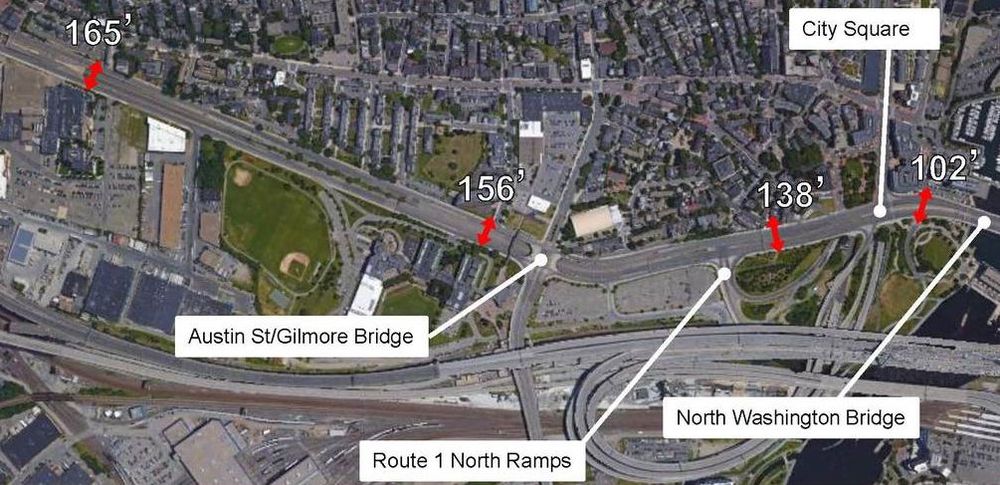Why are we even talking about this area?

In the years since Rutherford Avenue was widened from a narrow, congested and unsafe roadway into 10 lanes, traffic patterns have changed. The completion of the Big Dig has made travel on I-93 more attractive for commuters. The Navy Yard has changed from an 80,000 person employment center to a predominantly residential area. Other changes have reduced traffic on Rutherford Avenue. Since 1997, traffic volumes along Rutherford Ave have declined significantly as of 2008:
Rutherford Ave has capacity for 70,000 - 80,000 vehicles daily, but is used by far less. Data presented by BTD in June 2016 show growth in traffic since 2008, but they do not go compare this to actual capacity. The greatest daily volume shown is at the foot of the Alford Street Bridge (to and from Everett) where daily volume was 50,195 in 2015 (a 3.5% increase from 2008). The next greatest is just south of Austin Street where a daily volume of 33,555 is shown in 2015 (a 4.2% increase from 2008). These are modest changes given that 2008 was during the economic downturn. (See traffic data for details)
This means that fewer lanes than exist today are needed to meet current demand. As a result, opportunity exists to reuse the extra space for other purposes. In the photo above, we can see how much space is taken up by roadway, as compared to the fine-grained historic neighborhood nearby.
- - Sullivan Square reduced by 20%
- - Austin Street lowered by 15%
- - City Square dropped by 40%.
Rutherford Ave has capacity for 70,000 - 80,000 vehicles daily, but is used by far less. Data presented by BTD in June 2016 show growth in traffic since 2008, but they do not go compare this to actual capacity. The greatest daily volume shown is at the foot of the Alford Street Bridge (to and from Everett) where daily volume was 50,195 in 2015 (a 3.5% increase from 2008). The next greatest is just south of Austin Street where a daily volume of 33,555 is shown in 2015 (a 4.2% increase from 2008). These are modest changes given that 2008 was during the economic downturn. (See traffic data for details)
This means that fewer lanes than exist today are needed to meet current demand. As a result, opportunity exists to reuse the extra space for other purposes. In the photo above, we can see how much space is taken up by roadway, as compared to the fine-grained historic neighborhood nearby.










